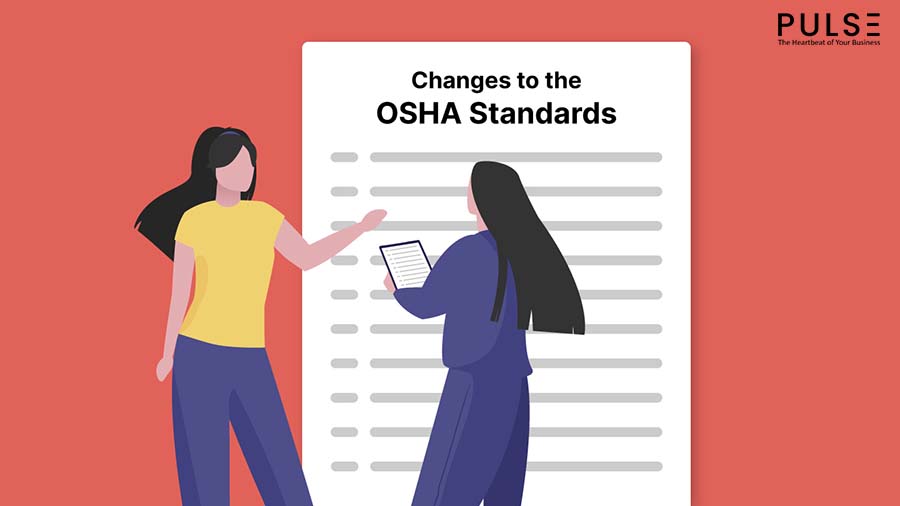On his first full day at the office, President Joe Biden gave Occupational Safety and Health Administration (OSHA) the green light to draft emergency standards for the protection of the American workforce from the COVID-19 pandemic.
The US Department of Labor has announced a list of regulations for the year 2021, which also includes 26 OSHA regulations. Let’s discuss six of these 26 OSHA standards in the final rule stage and will be valid soon.
Six Major Changes to the OSHA Standards
1. Communication Tower Safety
To reduce the fatality rate of employees at the communication tower worksites, OSHA plans to come up with new safety standards for the employees in the communication tower industry. The employees who climb towers for maintenance activities are prone to numerous hazards, such as fall hazards, hazards associated with structural collapses, and improper rigging and hoisting practices.
Over the past two decades, the communication tower projects have had the highest fatality rate that exceeds the rest of the construction industry. However, once the proposed safety standards for the communication tower industry are in effect, the fatality rate is expected to come down drastically.
2. Heat Illness Prevention
Heat is one of the primary weather-related hazards that take dozens of lives every year. In addition to that, thousands of workers fall ill due to extreme heat at worksites. OSHA’s new proposed standard for Heat Illness Prevention in Outdoor and Indoor Work Settings will be a gamechanger for employees working in the construction industry.
That’s because previously, OSHA used the Occupational Safety and Health Act’s General Duty Clause to cite employers for any violations. This generic clause would fail to address the particular issue of heat illness. The new proposed OSHA standards may include break times for employees. It may also ask employees to monitor outdoor and indoor temperatures and humidity levels.
3. Workplace Injury and Illness Tracking
In 2018, the Trump Administration had made changes to the Enhanced Workplace Injury and Illness Tracking law, which included anti-retaliation provisions that may discourage workplace safety and post-incident drug testing. However, the Biden administration will revert to the 2016 version of the rule, which will view drug testing and incentive programs as a form of employer retaliation.
Under the proposed changes, businesses with at least 250 employees would have to electronically submit injury and illness data with Forms 300 and 301. This would have a major effect, especially in the construction industry, where employers are struggling to find a balance between marijuana legalization laws and worker intoxication.
4. Personal Protective Equipment (PPE)
Personal protective equipment (PPE) is equipment worn by workers to minimize the risk associated with hazards that cause workplace injuries and fatalities. These hazards could be physical, chemical, electrical, or radiological, and workers need effective PPE such as gloves, safety glasses, earplugs, hard hats, respirators, etc., to defend themselves against these hazards.
One of the proposed changes in OSHA standards deals with PPE in the construction industry. New PPE standards at construction sites will address COVID-19 exposure of construction workers who have to work in cramped-up spaces.
5. Cranes and Derricks OSHA Standards
Construction and manufacturing companies use cranes and derricks to move heavy loads from one place to another. Unfortunately, these lifting devices pose a great risk to not only the operators but also to workers nearby. Hence, you can expect amendments to OSHA standards related to cranes, derricks, and hoists.

The new amendments will address issues related to correct references, power line voltage for direct current (DC) voltages, and alternating current (AC) voltages. In addition to that, the new changes will clarify the use of demarcated boundaries for work near power lines. It will also correct errors permitting body belts to be used as a personal fall arrest system rather than a personal fall restraint system.
6. Hazardous Materials
According to the definition given by OSHA, hazardous materials are “any substance or chemical which is hazardous to people’s health or is physically hazardous.” This can include chemical hazards such as carcinogens, irritants, as well as agents that can affect lungs, skin, and eyes. In addition, materials that are flammable and produce or release gases, dust, and fumes are also hazardous in nature.
However, the new standards related to hazardous materials will also include crystalline silica and lead levels found in the blood. Lead exposure is one of the oldest occupational hazards and can cause irreversible health effects such as hypotension, anemia, and other central nervous system diseases. These new changes will largely benefit workers in the construction industry who work with concrete, stone, and metals.
Final Words
All these new proposed changes are in the final rule stage and will be codified and enforced as OSHA standards in the near future. If you are looking for a cutting-edge EHS platform that offers inspection checklists that comply with OSHA standards, Pulse is what you need. Register now to try the features of Pulse, such as API integration, scheduling, and analytics.
